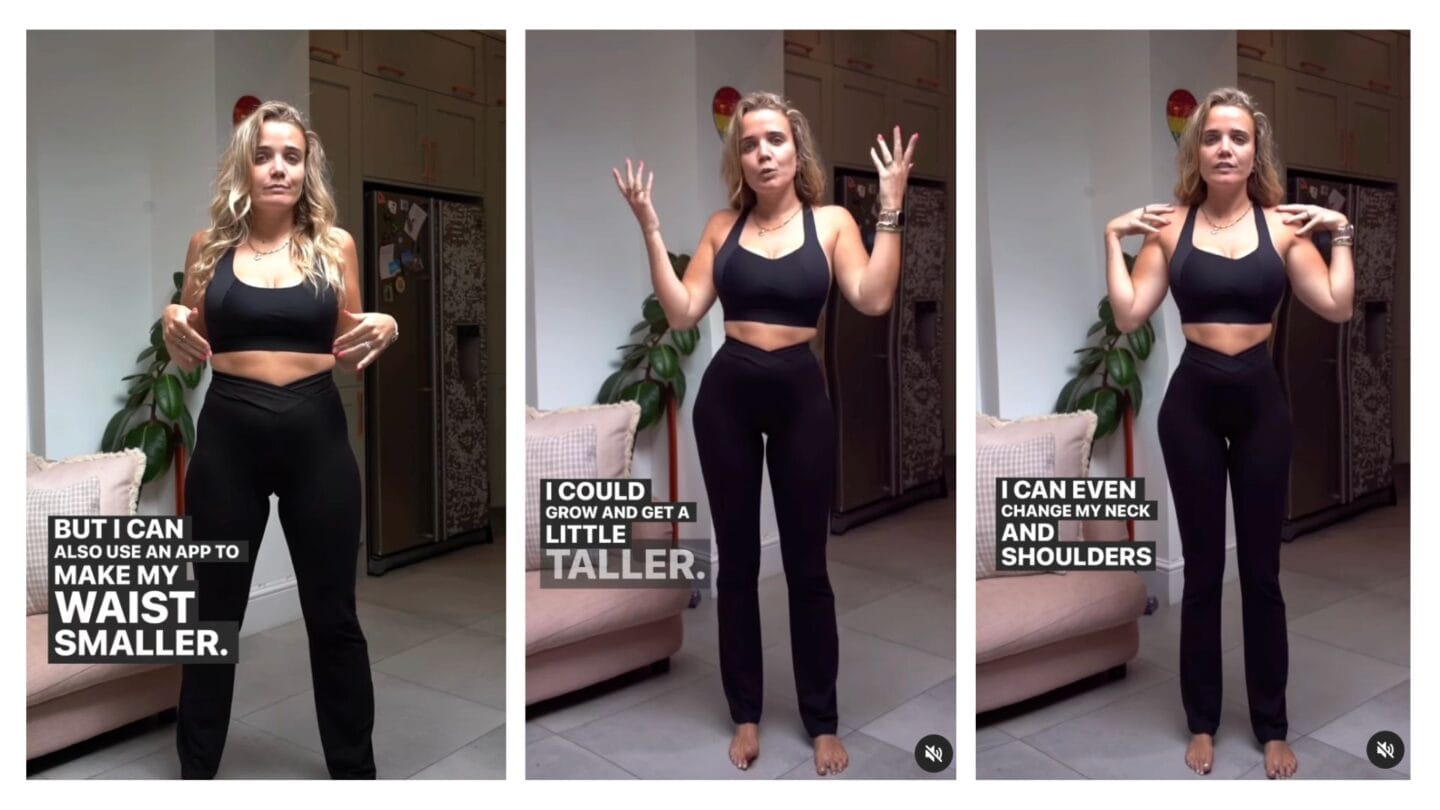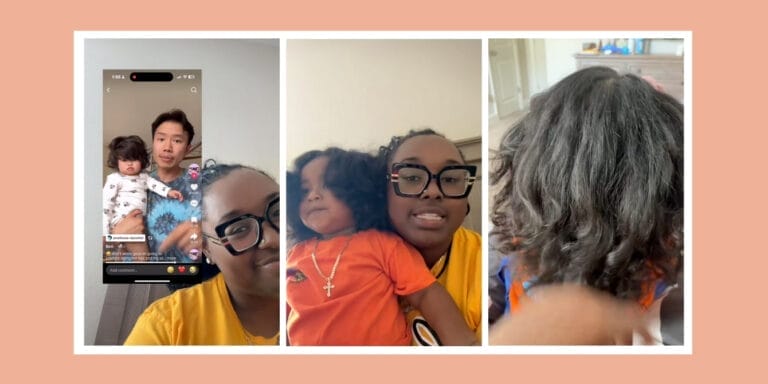Viral video shows how easy it is to alter your body shape—and the results are shocking

We all know it happens. But this reminder is reopening a vital conversation about the extent of body photoshopping on social media.
We all know that social media is powerful, but we might continue to overlook and underestimate just how much it’s messing with our idea of the “perfect body” (and comparing our own to that). We all know that body photoshop apps and Instagram filters exist, but we definitely don’t always realize the extent and deep impact of it.
Children as young as three are already showing signs of lack of confidence in their bodies, research shows. In another survey of 1500 Gen Z-ers, ages 16-24, 86% said their happiness was directly tied to social media.
So it makes sense why podcaster Emily Clarkson’s recent Instagram post went viral, as she explains just how much apps can change how your body appears on social media, writing in her caption to “compare with caution.” She talks to viewers about the potential to change each body part, while the app itself changes her body live during the conversation:
“Something we don’t quite appreciate is the extent of it…I can use an app to make my waist smaller, I can make my hips a little wider, I can make my boobs bigger, I can make my waist even a tiny bit smaller than it was,” she says, as her body changes during the reel. “I can grow a little taller. I can make my legs slimmer, I can even change my neck and shoulders—and then I can move around. I can exist on your screen, portraying a body I don’t own.”
She goes on to explain that nobody has to mention that they’ve altered their body with video editing software, further complicating what’s real and not real on social media.
One commenter wrote “Had no idea that you could do this to videos as well as photos…bloody terrifying.”
Another posted, “Amazing Ems…it’s a scary world! We need to protect everyone from this new world of real-life distorted avatars…”.
Related: How body positivity affects our daughters
Clarkson’s reel sheds more light on what many of us knew, but might not have internalized—that not many variations of bodies are well-represented on social media. Research shows that compact and muscular builds are disproportionately represented compared to lean and delicate builds, and also soft and round builds. Other research directly links media exposure to body dissatisfaction and disordered eating.
To Clarkson’s point, editing is pervasive—one study shows 71% of people edit their selfies, including 33% who always edit their lips before posting. Clarkson ends her video with a proceed with caution warning for social media users:
“So please let this be a reminder the next time you feel insecure because you’ve seen something on Instagram, that it is very easy to manipulate the image here,” she says.
To combat this movement, and get back to a society filled with real bodies and social media representation that matches that, multiple brands have pledged against editing, as have some celebrities. Some of these include Aerie, who initiated the #AerieREAL movement at the company, along with Dove’s “Real Beauty” pledge. Celebrities include model Ashley Graham, who has flaunted her post-baby stretch marks and curves widely on Instagram, and Keke Palmer who openly shared her acne battle due to Poly Cystic Ovarian Syndrome (PCOS).
More of this please, and less manufactured perfection.





































